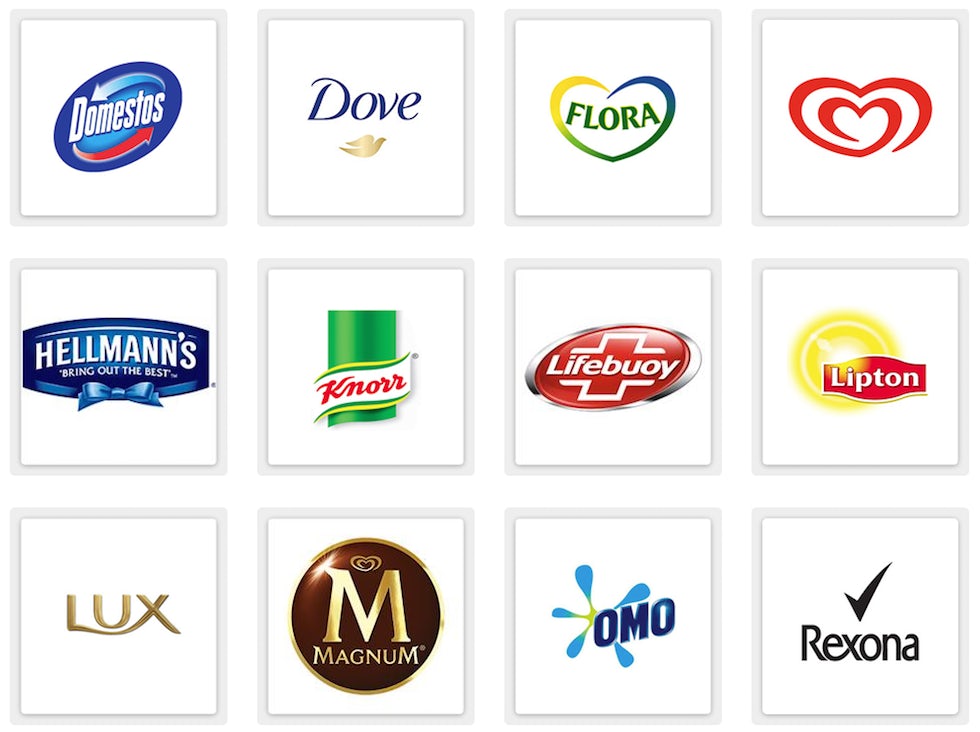How to ensure brand identity survives acquisition
Interweaving differing company cultures and often conflicting agendas means brands must work hard to retain their unique identity post-acquisition.

From billion dollar deals to mergers that failed to make the cut, the past year has been a tumultuous period for acquisitions, with clashing company cultures and struggles to retain brand identities.
No failed merger is more high profile right now than the cross-Atlantic tussle between FMCG giants Unilever and Kraft Heinz. In February Unilever averted a $143bn (£115bn) takeover by US consumer goods business Kraft Heinz, which had it succeeded would have been the second biggest acquisition in history.
Aside from Unilever’s objection to the deal, the merger to form the world’s second biggest consumer goods company is thought to have broken down due to a clash of cultures.
Unilever is renowned for its commitment to long-term sustainability ahead of short-term profits, investing millions on marketing and brand building. By contrast, the approach of private equity group 3G Capital, which owns a 50% stake in Kraft Heinz, is characterised by cost cutting and streamlined budgeting.
READ MORE: Mark Ritson – Unilever resisting takeover is a win for responsible business
Yet while the deal between Kraft Heinz and Unilever failed, there are many more examples in recent months of successful mergers and acquisitions. But in order to be prosperous in the long run brands must work hard to retain their identity, which can be easier said than done.
Dual brand approach
When betting businesses Ladbrokes and Coral merged last year the newly-formed company opted to take a dual brand approach rather than adopt a master brand strategy.
“We’re in an extremely privileged position that both Ladbrokes and Coral are such strong brands within a crowded marketplace,” explains chief customer officer Kristof Fahy.
“Both have a rich history, which provides the kind of brand equity that some of our competitors will crave. Ladbrokes and Coral were both strong and differentiated brands going into the merger and that hasn’t changed just because we now share an office. Of course, we want to use both brands to drive a greater market share and we are looking at how to do that.”
Defining the separate Ladbrokes and Coral brand identities is an ongoing project and while both businesses serve a betting and gaming audience, customer segmentation across retail and digital shows the two brands have different strengths.
It is for this reason Fahy insists there will not be a “knee jerk change of direction” from either brand over the next 12-18 months.
“We’d be mad to start a merger by throwing away either of the brands who score so well in customer trust and recognition. Every part of the business and the two brand teams – from social media through to corporate finance – understands the need to dial up the best of both brands,” Fahy states.
“We are not necessarily looking to carve out niches, as we don’t want to narrow our horizons at a time when our new found scale allows us to reach many more customers.”
The opportunity to learn will be a key gain, says Fahy, who describes how marketers in both companies longed for the day when they would get their hands on data from the “other side”.
While quick wins will be important, the Ladbrokes Coral marketing teams understand long-term integration is the real prize.
“It’s important that we don’t become too introspective around the process and lose sight of our customers, as they pay our wages. If we lose our customer focus we have plenty of competitors who will be trying to win them over,” Fahy acknowledges.
“Both brands need to be open to the idea that some of our best intentions pre-merger might not have made it into the premier league, and that simple recognition can lead to quick and smart improvement across the group. Given the scale we now have, that ability to change and improve is one of the most exciting challenges we have in business.”
A market ripe for mergers
There were a number of high profile mergers and acquisitions last year besides Ladbrokes Coral. Players from grocery and tech to television and transport all entered the fray. Following Sainsbury’s £1.4bn acquisition of Argos’ Home Retail Group in September, rival Tesco splashed £3.7bn on Booker, the UK’s largest food wholesaler and owner of convenience brands Londis and Budgens, in its bid to become the UK’s dominant food business.
Then in December food delivery app Just Eat fuelled its growth aspirations with the £200m acquisition of competitor Hungryhouse, communicating the “significant benefits” to restaurant partners and customers of the expanded choice available on the platform.
Over in the US, telecoms giant AT&T snapped up cable television company Time Warner in October for $85.4bn (£68.6bn), in a bid to feed consumer demand for cross device video consumption. The partners argued consumers will benefit from the companies’ shared capacity to create mobile-optimised short-form programming and more relevant video advertising.
In the same month Microsoft sealed its $26bn (£20.8bn) acquisition of LinkedIn. The deal is intended to extend the reach of sponsored content across Microsoft properties, according to Microsoft CEO Satya Nadella, as well as help develop a business news desk across Microsoft’s “content ecosystem” including MSN.com.
However, not every deal completed smoothly. Rocked by the news Yahoo had been hit by two substantial cyber attacks, Verizon knocked £281m off its offer to buy the troubled search engine provider, settling on $4.48bn (£3.6bn) in February.

Elevating a disruptor
Unilever is no stranger to acquisition itself. Following its purchase of ice cream company Ben & Jerry’s in 2001, the consumer goods giant has developed a track record of cherry picking emerging brands with interesting business models and embedding them within the company.
This was true last July, when Unilever turned heads by splashing a reported $1bn (£760m) on shaving service Dollar Shave Club, an acquisition which gave the consumer goods heavyweight a foothold in the subscription market.
Despite being yet to turn a profit, Dollar Shave Club held 54% of the US online shaving market at the time of purchase, versus P&G rival Gillette’s 21% market share.
READ MORE: Mark Ritson: Unilever resisting takeover is a win for responsible business
Just as Dollar Shave Club shot to prominence through its association with Unilever, being acquired by an industry giant can help an independent brand go stratospheric.
In August, retail giant Walmart took an important step into the online market with the $3.3bn (£2.63bn) acquisition of US ecommerce retailer Jet.com, resulting in an immediate boost in awareness. As an example, the online retailer came fifth in the Global Brand Simplicity Index 2016 US list of top 10 disruptors, led by Dollar Shave Club at number one.
READ MORE: Consumers will spend more on simple brand experiences
The halo effect of a high profile acquisition could also benefit London-based gin distiller Sipsmith, which in December was snapped up for £50m by Japan’s Beam Suntory, the world’s third-largest spirits company. To maintain the brand’s artisan feel, the company founders will continue to operate Sipsmith’s 35-person distillery in west London.
But brands need to ensure the fit is right. When Coca-Cola took a stake in Innocent in 2013 consumers raised concerns about the impact it would have on the smoothie brand’s values and operations.
Acquisition by a corporate giant does not mean the disruptor’s brand identity must change though, as in the experience of UK travel search engine Skyscanner, which was acquired for £1.4bn by Chinese online travel agent Ctrip in November.

Central to the deal is Skyscanner’s determination to remain operationally independent, which is important from a brand identity perspective for both customers and employees, says global head of design, Steve ‘Buzz’ Pearce.
“It illustrates that we’re a separate entity and culture. From a traveller point of view it illustrates that our vision and goals won’t be changing. From an employee and potential-employee point of view that continuity of identity is really important too,” he explains.
“Skyscanner is known as a fast-paced, exciting and award-winning place to work. As we continue to grow and recruit for roles across the business, in design and other areas, brand continuity is an important signifier that our employee ethos will endure.”
Pearce describes the Skyscanner brand identity as a reflection of the team – a collection of travellers who believe in challenging the status quo. There is no intention to adopt a corporate identity post-acquisition, but instead to remain on the side of the traveller and retain the brand’s characteristic sense of humour.
“As a business we’re constantly looking to improve, try new things and learn. As such Skyscanner’s brand identity undergoes constant tweaking and adjusting, for example in the tweaking of colours,” Pearce explains.
“It’s worth noting that identity is only the tip of the iceberg. The brand goes way deeper – it is behavioural and cultural. It’s less about a strict adherence to a tone of voice, but more about treating people in the way they want to be treated at that point in time.”
The team expects to benefit from the learnings acquisition will offer, as well as a shared sense of curiosity and ability to impart best practice.
Merger of equals
Like Ladbrokes Coral, Dixons and Carphone Warehouse took a dual brand approach when the two companies merged to form Dixons Carphone in May 2014. At the time the deal was described as a “merger of equals”, an attitude which has informed brand integration efforts over the past three years.
“We wanted to respect the strength and equity of each of those brands, as well as understanding a consumer’s reasons for choosing one brand over another,” explains Dixons Carphone head of brand and advertising, Georgina Bramall.
“We prioritised respecting those relevant strengths and making sure that we were able to preserve them as we went forward with the merger, while also making it incredibly clear for customers.”
The teams looked at the merger through two lenses – making sure everything made sense from a customer and operational perspective in terms of identity and cohesion. The store estate was a big focus and the process of rolling out a three-in-one format, which introduced Carphone Warehouse to a wider audience through Curry PC World stores.

While the temptation when bringing businesses together is to think about merging the offering to create one overarching brand, Dixons Carphone was very specific that it wanted to retain the specialism of the brands.
READ MORE: Dixons Carphone’s CMO on what it takes to succeed following a merger
“From our customers’ perspective they’ve shopped with these brands for a long time and they’re part of their established shopping patterns, so anything we did had to lay a value on top and not detract from that original shopping experience,” Bramall explains.
“Culturally there have been lots of gains and its brought lots of talent together, particularly within the marketing function. There are groups of people who work across both brands, but equally there are specialists who preserve both individual brands.”
The creation of a purpose built office also offered the opportunity to build a joint creative environment, with a particular focus put on where teams were seated in order to encourage the cross-pollination of ideas.
It’s not always advisable for businesses to keep all brands alive post-merger though. Following Marriott International’s acquisition of Starwood Hotels and Resorts Worldwide last year, Marketing Week columnist Mark Ritson warned of the need to streamline its brand portfolio without losing customers.
The business now operates 30 hotel brands around the world, including Sheraton, Westin, The Ritz Carlton, W Hotels and Marriott, but in order to be a stronger, profitable business in the long run Ritson argued the company must kill off some of its brands.
Turnaround plan
Long accustomed to the advantages of acquisition, Lenovo gained global notoriety with the purchase of IBM’s personal computer division ThinkPad in 2005. The subsequent $2.91bn (£2.3bn) acquisition of Motorola from Google in October 2014 has helped Lenovo expand into the smartphone market.
At the time Motorola had lost much of its shine from the days when the Razr was the dominant handset of the early 2000s. Therefore the goal over the past three years has been to get the brand to a place of stability that could appeal to new millennial market, explains Lenovo executive director of worldwide brand, Jo Moore.
“Motorola is having a renaissance and it’s a turnaround story as much as it is a brand acquisition story. We needed to give it a new face to the world, because it had been floating along and nobody quite knew what it was about,” she explains.
“So we went back and looked at Moto in its heyday in the 1990s and 2000s when it was the number one phone brand around the world, looking at what made Moto iconic then.”
The key legacy features that stood out during the rebrand were the batwing logo and ‘Hello Moto’ sonic, which has been reengineered with a woman’s voice. The visual identity is now more colourful in order to stand out from competitors like Apple or Samsung.
“We have very much taken a challenger identity, because if you look at the advertising and marketing of most of our competitors it’s very stark, white and clean, whereas ours is much more vibrant and full of life,” Moore says.
“The identity is very ‘millennial’, but still feels authentic to what the brand was at its best, which allows us to appeal to both a younger and older audience.”
The acquisition enabled Lenovo to leverage the heritage of the Motorola brand, as well as demonstrate its credibility in the smartphone sector. This is the reason why it is important for customers to connect the two brands.
“We want the credit for bringing out these amazing phones wrapped up in this wonderful identity. We want it to be attributed back to Lenovo and we don’t want to be invisible,” says Moore.
“We need to be seen as a credible player across all formats, so it’s important for the overall Lenovo brand that we have a smartphone product, it just happens to be called Motorola. I don’t think people will say ‘I have to have that phone because I want the Lenovo one’, but if they have a good experience with a Lenovo PC and they attribute that to the Motorola brand then that’s when the two brands start to help each other.”
Ultimately acquisition can involve many aspects, from maintaining operational independence to retaining a unique brand identity or working on a long-term transformation project. Whatever the ambition of the merger, brands must tread a careful line to ensure the objectives of all the different parties are met.







